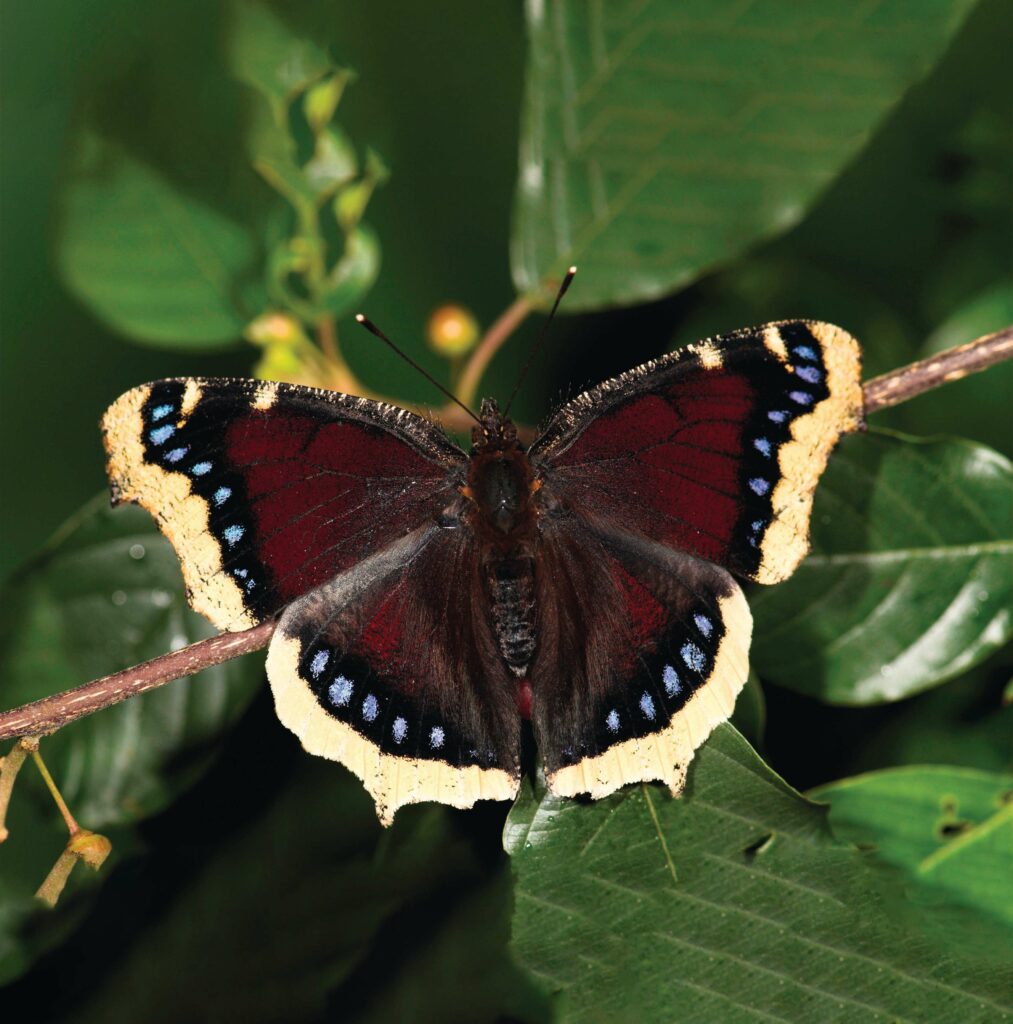VAGRANT SPECIES DIARY
Camberwell beauty, Surrey/Suffolk

VAGRANT SPECIES DIARY
DURING LATE MARCH AND EARLY April one of the Northern Hemisphere’s most distinctive butterflies graced our shores with sightings of single butterflies reported at Wisley Common, Surrey and Little Stonham, Suffolk. The first individual was present intermittently for a week or so whereas the second was seen only by a handful of local wildlife enthusiasts. But where did they come from and how did they get here?
Determining butterfly vagrancy has long been a minefield with most non-native butterfly sightings likely relating to insects of captive origin, bred by hobbyists or commercially for release at events. Despite this, it is thought a handful of species occur in the UK as vagrants and the unmistakable Camberwell beauty is thought to be one of the most regular.
Distributed widely across North America, Europe and Asia, this butterfly appears mainly in late summer and early autumn. It shows a distinct east coast bias especially during high pressure conditions and light easterly winds over the North Sea and there are marked influxes (and occasionally larger-scale irruptions) during certain years.
The Camberwell beauty is one of the longest-lived butterfly species known with a life cycle of around 12 months; adults hibernate during the winter and may be seen again the following spring in smaller numbers – as perhaps has happened here following a noticeable influx in 2022. Such patterns in occurrence are our best clues that these butterflies are of mainly natural overseas origin, in this case most likely Scandinavia as their patterns mirror those of migrating birds known to originate from the same place.